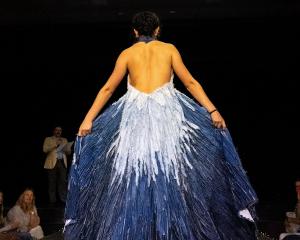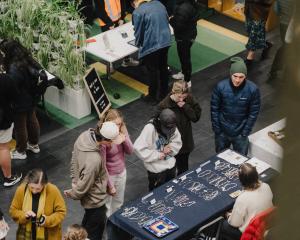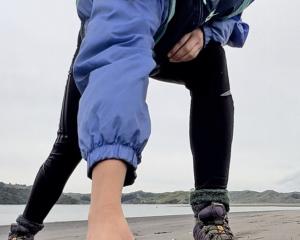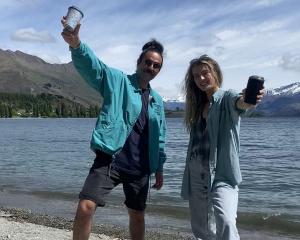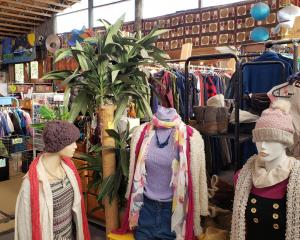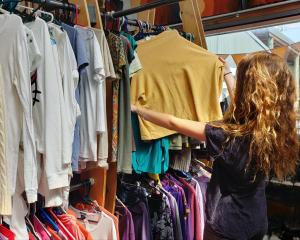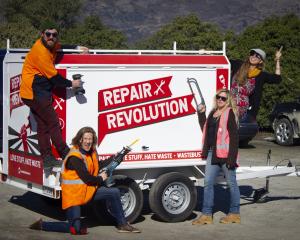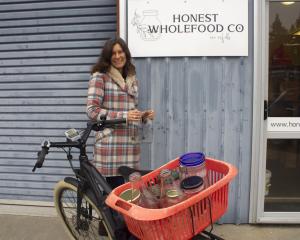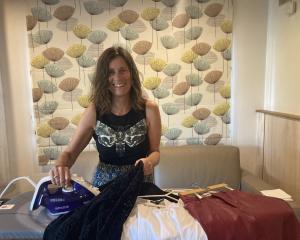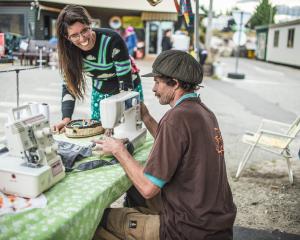
I have to confess I’m a bit of a news junkie. But the incoming news is getting so dark that it’s making me want to put my head under the pillow and block it all out.
The climate crisis is bringing so many sad stories and hard questions: wildfires in Greece, hiker deaths in Nevada and cloud-seeding projects in Mexico to combat drought. And that’s just today! Even in communities like Wānaka that have been so far lucky enough to avoid cyclones, storms, wash-outs and infrastructure damage, we are seeing changes in normal climate patterns such as fewer frosts and less snow, which makes climate change all too real.
It’s so overwhelming that it’s tempting to ignore it all and just focus on the day-to-day (or the number of days to the next holiday). Daily life can be so busy and the problem is so big — it feels like nothing we can do will make a difference.
Unfortunately, like the homework assignment or work project (or column) with a deadline looming, ignoring it doesn’t make it go away. On some level of our consciousness, the understanding that the climate is changing and the fear of the unknown is grinding away, wearing us down with a sense of powerlessness.
We have to find some sense of personal power if we’re going to cope with the challenges ahead. And having worked on environmental issues for more than two decades, I’ve always been a big believer in the power of individual action, especially when it’s collaborative.
Big policy changes are key, but policies are based largely on what voters want (or at least are prepared to support). When former prime minister Jacinda Ardern spoke about the decision to ban plastic bags, she said that it was the topic she’d received the most letters from the public on. Letters count! Big producers and retailers do listen to their customers and (eventually) change their packaging and distribution methods if they get enough pressure. Social media feedback counts!
Personal action is more powerful when we do it together, so nationwide and global campaigns, like Plastic Free July, can be really helpful in giving community groups a focus and reason to collaborate. I’ve participated in countless Plastic Free Julys, and it’s also a great marker for changes over time. Trying to go plastic free for a month used to be a guaranteed fail — as it was so difficult to buy food without single-use plastic packaging. Now, in Wānaka, we can buy nearly anything in refillable or no packaging and usually from multiple outlets: dry goods, meat, milk, coffee, tea, honey, bread, flour, nuts. You name it, you can buy it without plastic year round (other than potato chips — there’s a business waiting to happen!).

Plastic Free July is a great excuse to investigate new ways of doing things. We survive the demands of daily life by performing many repetitive tasks on automatic; reducing the decision-making energy involved in just staying alive. Taking some time out to explore different options during Plastic Free July can be liberating and fun. Filling a jar of nuts, making your own cashew or oat milk, choosing celery without plastic, taking your own container for chicken or fish ... the options are endless and it’s not so much about your success or failure in going completely plastic free, as about putting the energy into trialling different behaviours. The goal is to find some new habits that you enjoy more than your old ones, so you can keep them going when July finishes.
As part of our Resourceful Communities programme, Wastebusters ran a Plastic Free July event to connect our community and explore plastic-free possibilities. We invited the community to join us after-hours in our Wastebusters reuse shop for conversations, hands-on demonstrations, microplastics education, plastic-free kai and drinks. People chatted, made beeswax wraps and reusable produce bags, chatted some more, learnt how to make their own deodorant and plant milks, ate, drank, chatted and looked at microplastics through microscopes. It was such a fun night, especially the connections and sharing of stories and experiences.
Connection and sharing — it makes you feel happy. And that could be one of the biggest challenges of climate change, finding ways to stay positive in the face of the crisis. Taking action combats powerlessness. This feedback from one of the attendees stayed with me. ‘‘I wanted to do something, but I didn’t know where to start. Now I do ... .’’
We know the climate crisis is already putting pressure on the cost of living and people’s capacity to adapt and change. The Kantar 2023 Better Futures report found that ‘‘NZers continue to aspire to do the right thing. However, intent is evolving faster than action — in fact action in many cases is going backwards.’’
Zero waste hubs like Wastebusters exist to inspire and support action. They are practical places where people can take action, by recycling materials, reusing and repairing things. At the same time, zero-waste hubs support communities to connect and learn about living more sustainably and resourcefully. Different doorways suit different people, but stepping through any of the zero-waste hub doorways takes you into a community where people are taking action towards a circular economy, and that creates hope and resilience.
So many people visit us at Wastebusters, and ask ‘‘how do we get a Wastebusters in our community?’’. Creating impact and community action is well-proven across the Zero Waste Network, and can be easily replicated. It’s the financial model which remains a work in progress. The real question to be solved is — how do we fund a Wastebusters in our community?
I don’t have a clear answer for that, other than the simple thought that we get what we pay for. If community connection and action are the key to mitigating and adapting to climate change, then let’s pay for it. Let’s find a way to pay for the action and community resilience that we’re going to need for the future. And when every community has a zero-waste hub, we’ll find that action is going forwards, not backwards.
Gina Dempster is resource recovery manager at Wastebusters

